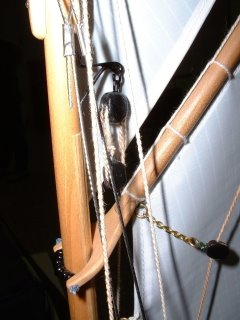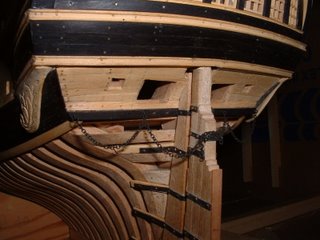 The model in the background is the completed conversion of USS Boston as detailed in the post of November 26, 2006. The model in the foreground is of USS Los Angeles, the ship kit from which the USS Boston was built. These are both Baltimore class heavy cruisers.
The model in the background is the completed conversion of USS Boston as detailed in the post of November 26, 2006. The model in the foreground is of USS Los Angeles, the ship kit from which the USS Boston was built. These are both Baltimore class heavy cruisers. This drawing of USS Boston was copied from a magazine, modified according to photographs and resized to 1:700 scale in order to provide a plan from which to make the modifications to build the model.
This drawing of USS Boston was copied from a magazine, modified according to photographs and resized to 1:700 scale in order to provide a plan from which to make the modifications to build the model. This is another view of the two ships from the reverse angle. This will allow comparisons between the two ships. You will notice that the shape and width of the stern is very different.
This is another view of the two ships from the reverse angle. This will allow comparisons between the two ships. You will notice that the shape and width of the stern is very different.The construction of the tower mast structure amidships used an interesting technique. Double sided tape was laid down on a surface. The modeller drew the plan for one side of the tower on the tape. He laid plastic rod down on the drawing on the tape, cutting each piece to length on the tape. He then applied a small amount of liquid plastic glue to each joint. When the glue set the piece could be removed. This was done for the front and back of the tower. The following assembly task was relatively easy.


























































